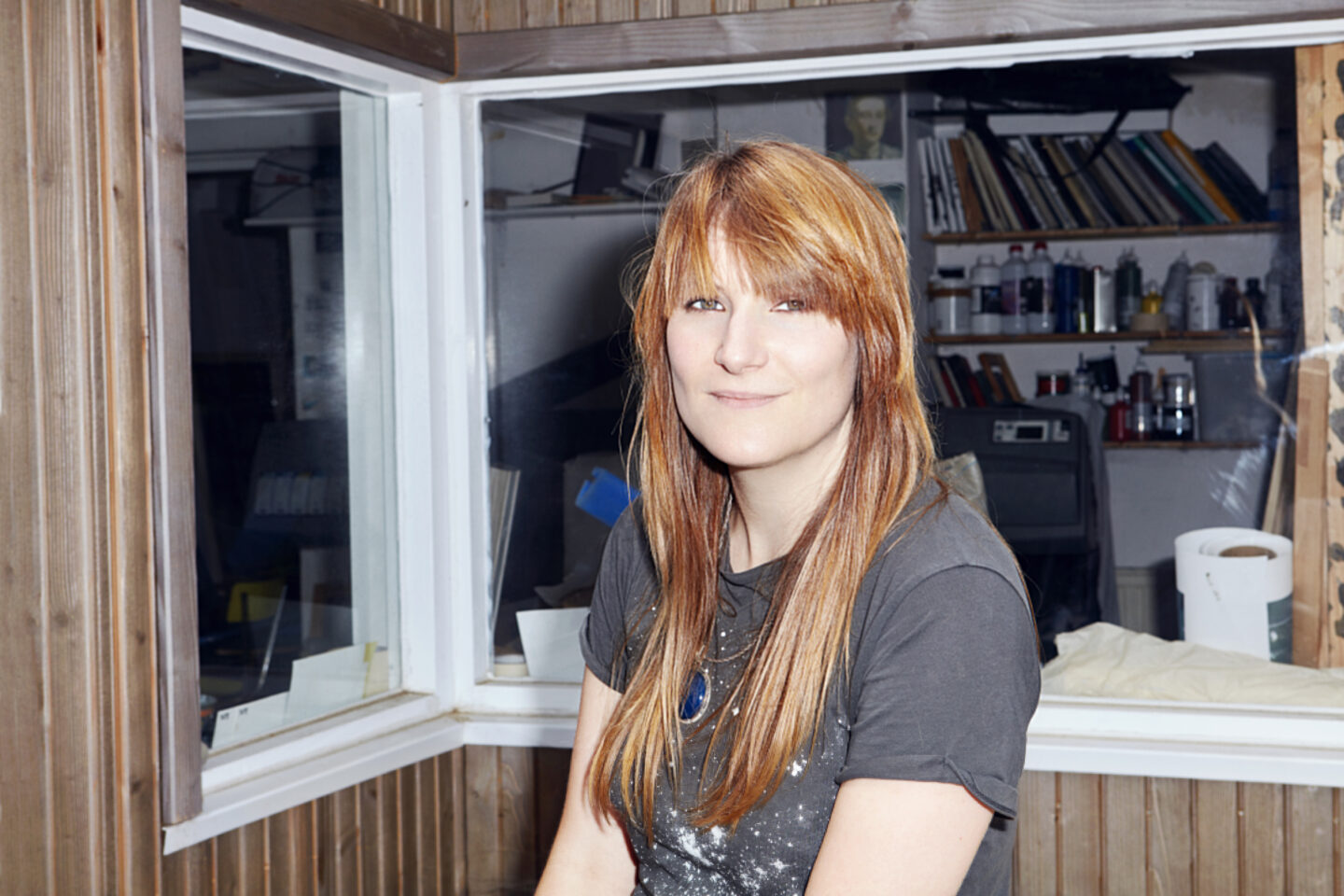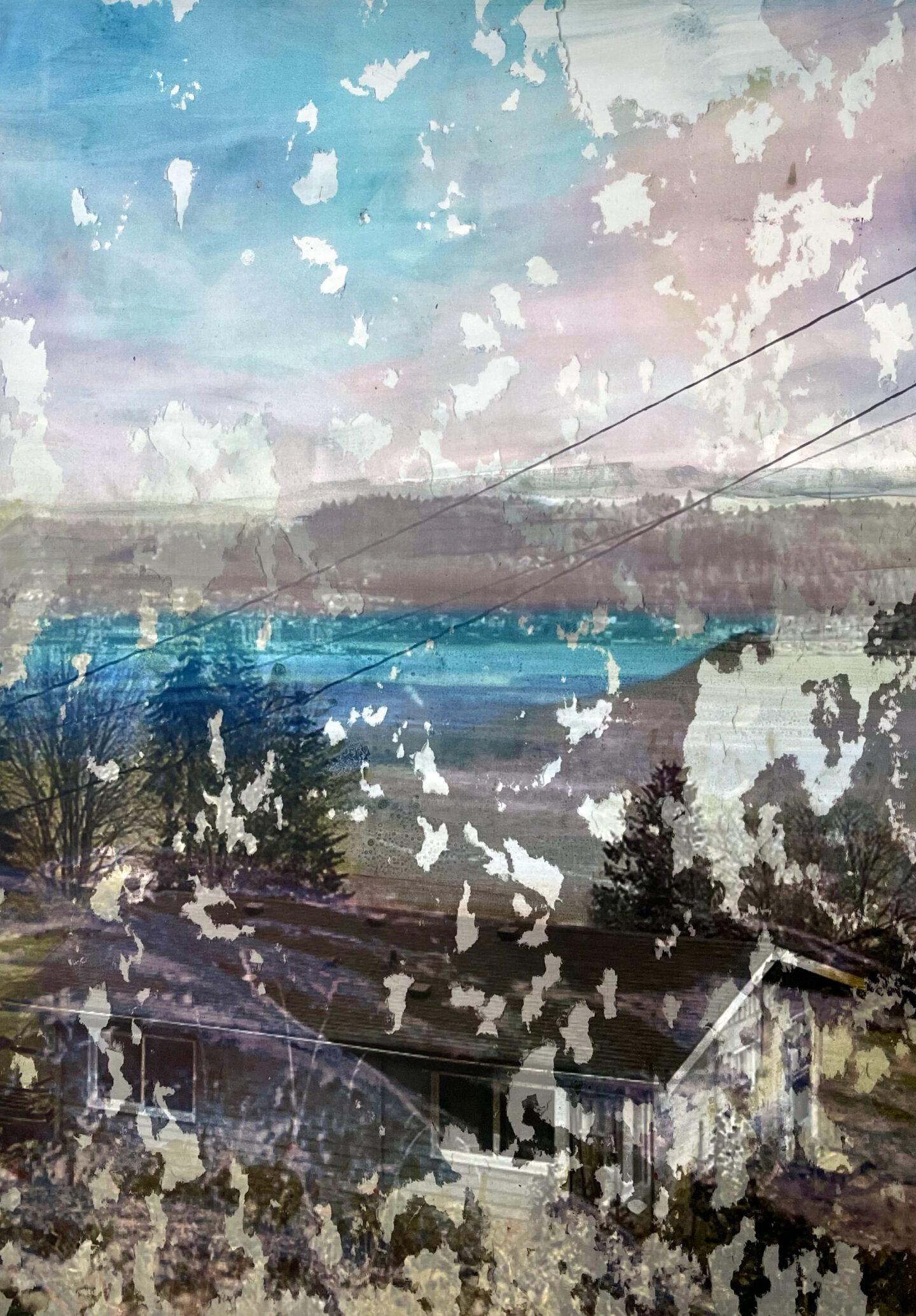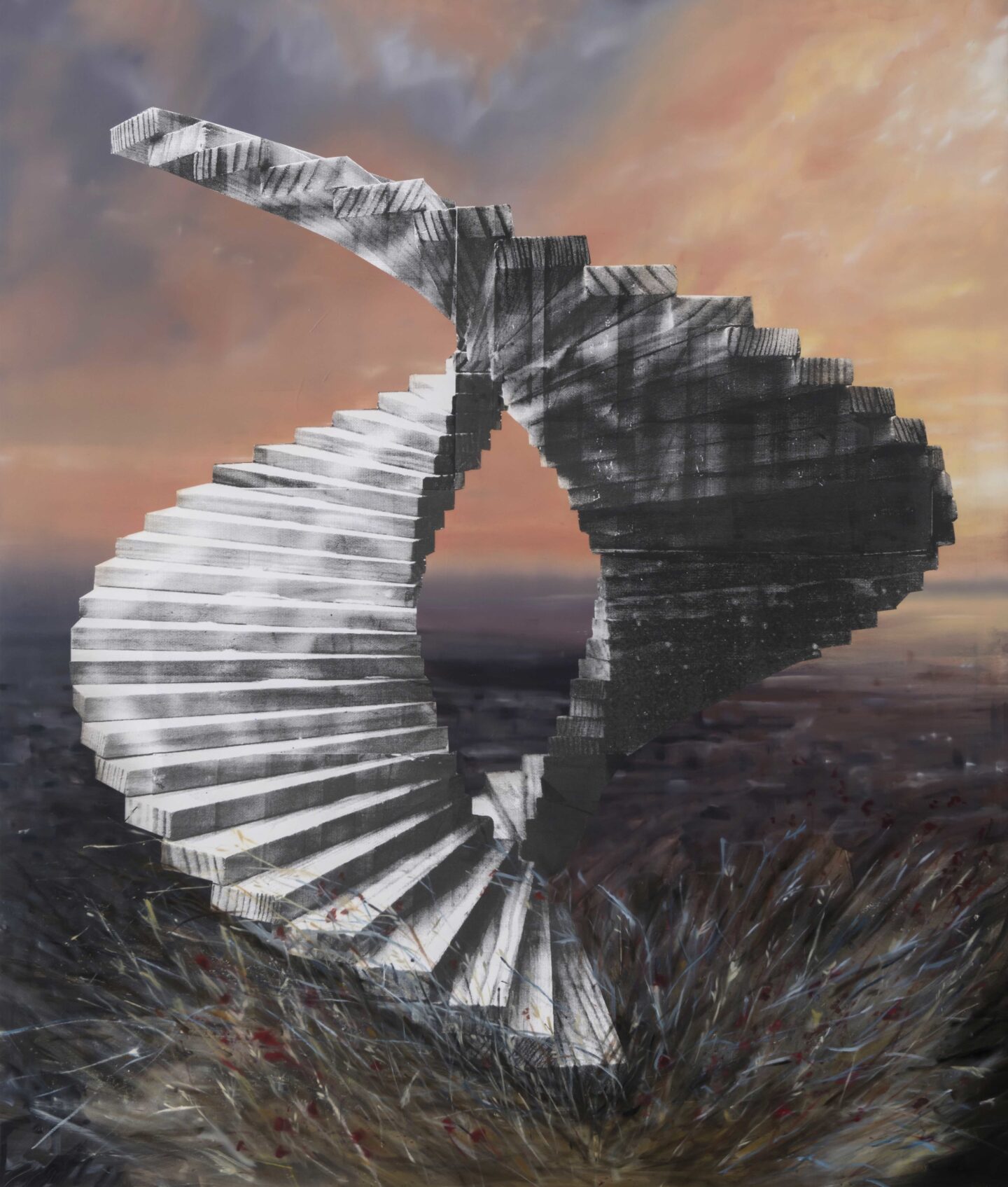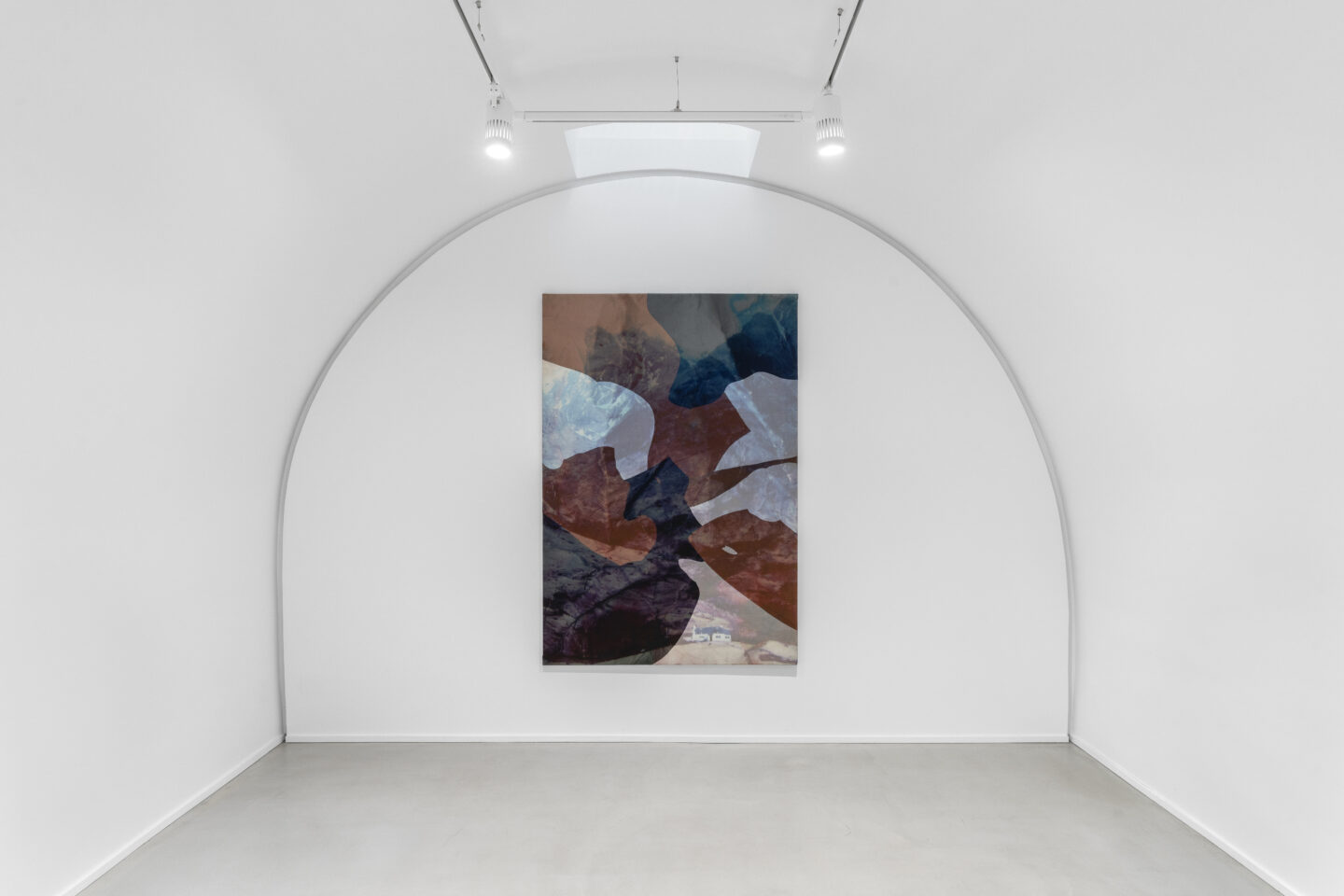Eva Nielsen: When Art Interacts with LMVH Artisanal Excellences

In her multimedia practice Franco-Danish artist Eva Nielsen has long explored the everyday role of architecture and its ability to influence our perspectives of reality, and its perception.
We spoke with her before the opening of her two shows in Paris presenting the results of her experience at LVMH Metiers d’Art Residency 2021-2022, a pioneering 6 month art residency program where artist are asked to collaborate with artisans to use and reinvent their special savoir faire involved in the production of all the brand’ items at different levels.

With the LMVH residency you collaborated with artisans at Tanneries Roux, which is recognized for their exceptional know-how in calf leather tanning and finishing, and Twinpix, a silk printing workshop who has developed an innovative double-sided printing technology in Europe. Can you tell us more about this experience and how this collaboration influenced your work?
It was a very strong experience. First of all the context was really special because I was for almost seven months in the tannery which is situated at the foot of the Vercors. It is a very strong place with a mountain that is both very powerful and linked to a history of resistance in a very strong way. The tannery-called Tannery Roux – in which I was welcomed is a tannery that has 200 years of history and that is also really linked to the history of the territory since it depends on the river called the Isère, which is absolutely necessary for leather work. This was very well received by the teams of craftsmen and I was immediately fascinated by the expert gestures of each one and the metamorphosis at work. At first I was very intimidated by the fact of working on leather but very quickly I was admiring the work of the craftsmen. I decided to work from the scraps and fragments not retained by the craftsmen. Concerning the printing savoir-faire, it was a really impressive experience to see the ability to print on a very delicate textile such as silk and I really benefited from the guidance of the craftsman regarding this work. Quickly I realized that what interested me in this residency was to superimpose very different materials like leather and silk and to make them coincide together in the same composition. Paradoxically, the fact of working with these materials, which are so different, and of painting on them, made me take into account more acutely what it is to work on canvas.

Next for you there’s the Lyon Biennial, which is now scheduled to open in September. This year’s edition is curated by Sam Bardaouil and Till Fellrath, under the title manifesto of fragility. Can you tell us something about the works you’re going to present there, and how they will react and relate to the Biennale’s main theme?
The title Manifesto of Fragilty chosen by Sam and Till is both a strong and inspiring one. It made me want to explore the question of vanity but at the same time the principle of construction, of making plans while knowing full well that they can collapse. With this vision I imagined starting from children’s constructions made with pieces of wood to also evoke the dizzying fragility of these constructions and their possibility of collapse while preserving the intensity of the desire to do it. Another of my paintings that will be presented at the Biennial is linked to a recurrent obsession in my work: the questioning of the construction of houses, a fragile shelter that responds to my observations of the creation of urban areas. This will be the first time that I will make paintings of such a format.

How has your experience been with the Biennial organization and curators?
It’s a strong experience to participate in a biennial, because it’s above all a collective experience. It’s an open discussion with the curators, Sam and Till, who have enormous confidence in the artists, which I appreciated from the very first second of our collaboration. They really trust the artist’s vision and do everything to make sure that things can happen. The whole team of the Biennale is greatly involved and are very important helpers in this project.

Moving back to your practice: Your work often focuses around these suburban landscapes, representing elements of a sort of post industrial archeology but always in a utopian and atemporal dimension. Tell us more about what fascinates you in these subjects, and the messages that all your research tries to convey.
There are many things that interest me about working with architectural elements. First of all, it’s always interesting to me because I live in the suburbs and I’ve often had to walk around the city. This peripheral relationship to architecture and the elements has been a constant source of inspiration for years. I have also noticed that the peripheral urban landscape is in constant mutation, constantly changing the notion of city limits. On the other hand, my feelings when crossing the urban landscape is not that of a geographer or a documentarian. It is as a painter that I perceive these views and that I transcribe them within my compositions. Architectural fragments are incorporated into the compositions linked to other views, sometimes linked to other geographies. I am sensitive to the fact that the viewer cannot really situate these spaces and is in a form of dream-like turmoil when faced with the paintings.it can evoke familiar places but there remains a part of doubt. This doubt is constitutive of my work and this is the reason why I mix and hybridize different techniques in order to add confusion on the process linked to the making of the painting.

Can you walk us through your artistic process? Which is the source of inspiration for these images?
My working process is linked to a multitude of layers and moments of painting. This confusion I mentioned earlier is something I maintain. That’s why I also play with the different techniques so that you can’t really understand or know how the painting came about. Sometimes I’ll screen print first and then paint layer after layer over the screen print by a masking system. Sometimes I will take and then screen print successive fragments to alter the first image. What interests me the most is the question of alchemy and the porosity or otherwise of materials. In terms of my working process, I would say that an important element is the fact that I work directly on the ground, which allows me to accentuate the disturbance of perception in the visual experimentation that I have with the painting.

Some of the most recent works feature much more brighter gradients. In some sunset/sunrise lights erupt into these apocalyptic scenes, overturning them in another type of vision. What inspired this turn?
I have always been obsessed by the question of the horizon, which has the great characteristic of constantly evading the gaze and whose physical presence is both tangible and completely unattainable. Living on the periphery, the notion of the horizon is such that there is perpetually something between oneself and this infinity. The experience of the pure horizon is extremely rare. A lot of the painters I’m interested in have been towards a sunset or sunrise chromatic range like Caspar Friedrich or Agnes Felton. It is particularly interesting because it raises pictorial, physical, metaphysical and spatial questions. The fact of having introduced this chromatic range allowed me to accentuate the break with the serigraphy frame and at the same time to open another axis in the interpretation of my paintings.

Name 3 women artists that you admire and inspire your work.
A lot of Lee ! Lee Bontecou, Lee Lozano, Lee Krasner, Lygia Clark, Barbara Chase-Riboud, Charline von Heyl, Lorna Simpson, Amy Sillman, Tacita Dean… Sorry, impossible to name just 3. I love how all of these artists are thinking about the question of the fragments, the counterforms, the collagist aspect and the hybridity. Their works are both strong and fragile, full of decisions and doubts. They are my guides, in the good and bad days in the studio.
Dream cocktail meeting of your life: Where and with who?
All the artists mentioned above!

This year you’re also shortlisted for the prestigious Fondation Ricard Award 2022, and some of your works will be on view there with the occasion of the annual show. What else is up for you and where can people see your works next?
In May I will have two solo exhibitions in Paris, one at the Espace Forma and the other at the Galerie Jousse Entreprise.
In September it will be the opening of the group show at the Pernod Ricard Foundation. In mid-September it will be the opening of the Lyon Biennale. And at the same time the opening of my second solo exhibition at The Pill in Istanbul.



